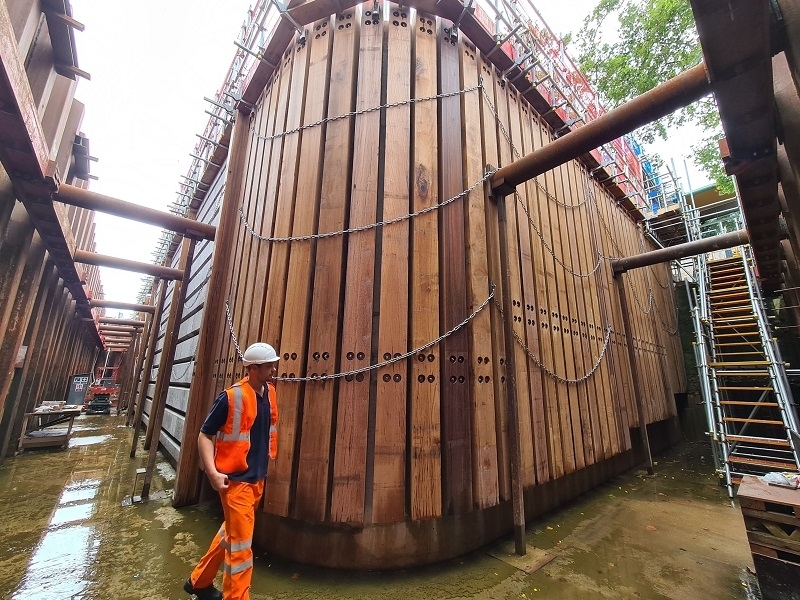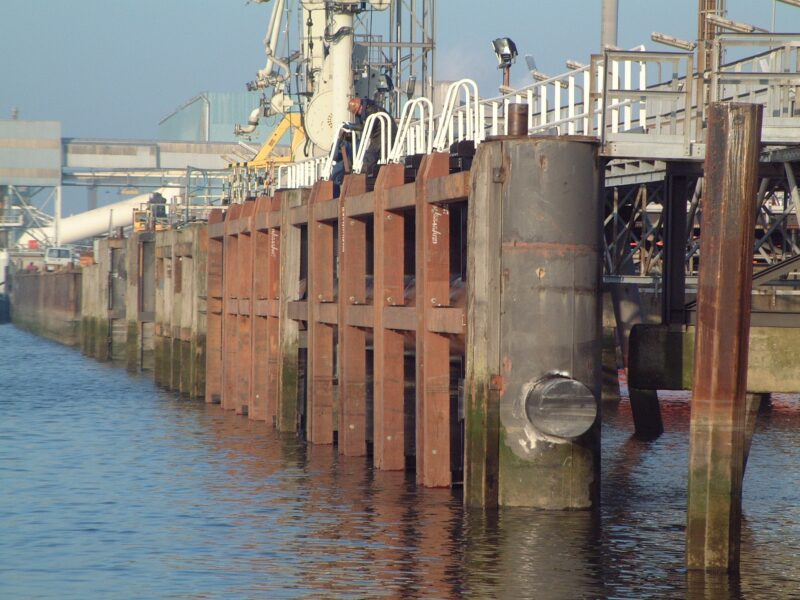What are fenders used for in marine environments?
Published: 15/06/22 By: Mike Bekin
It’s no secret that timber is used for more than just decking. From tables to the frames of houses, it is a very versatile material with a whole range of functions! But did you know that it is also a key construction material for the marine environment? You might not think wood would be the best choice around water, but it actually works very well when chosen properly. One of its main marine applications is fenders. Here’s everything you need to know.
What Are Marine Fenders?
With heavy currents and strong waves, it’s not difficult for equipment out at sea to become damaged. When ships and boats are being tossed around by the winds or water, crashes are bound to happen with piers, harbours and marinas! This is where fenders come in. These common features in the marine built environment are designed to absorb the impact of vessel collisions, creating a cushion between the ship and the harbour wall.
They’re also referred to as marine bumpers, and work in a similar way to bumpers on a car. They are essential out at sea to prevent constant damage to boats, ports and other equipment, keeping our ocean-bound vessels safe for years to come.
What Are Timber Fenders Used For?
Timber is used to create fenders for many applications. They can be used on the hulls of boats, on the side of harbours and ports, around offshore wind turbines and on oil refinery sites. You can also find timber fenders on rivers and canals, where they are used at lock gates and along the banks to prevent boats from scraping against the edge, especially if the banks are made of steel or concrete.
Fenders are permanent, long-lasting structures that need to be durable, so are made from the hardiest timbers such as Ekki or Oak. These species are chosen for being naturally durable, which means they can last many years in water contact without rotting or needing to be treated with nasty chemicals.
Let’s Take a Closer Look at Some of the Applications
Timber fenders can be used slightly differently depending on the application, but the general idea is the same. For example, on oil refineries out at sea, timber is added to the concrete bases which rise out of the sea. Along the edges of the concrete are vertical and horizontal fenders, as well as dolphins – three or more poles tied together. The fenders usually have chamfers on all four edges to avoid damaging any vessels that hit them. The timber used has the correct density to absorb the impact without damaging the vessel.
This is a similar system to the fenders we supplied for the Thames Barrier, which are curved and pre-drilled.

Another system is to completely cover a wall edge with timber. Rather than timbers piles at regular intervals, planks are used to create a new front, encasing the material that needs to be protected. This is a more fool-proof design, where even small objects can’t collide with the equipment.
Putney Embankment Foreshore in Central London
One application of fenders that EcoChoice were involved in was along Putney Embankment, where a new stretch of public land was being built directly into the Thames. We delivered over 100 FSC-certified Greenheart fenders, accurately measured and in a range of different profiles. The wood created a fender facade that would protect the Thames pier whilst adding a contemporary, neat aesthetic that blends in with the natural surroundings.
Learn More About Timber With EcoChoice
At EcoChoice, our timber experts are committed to educating the world about all things timber! From fenders to FSC-certified forests, we have a wealth of knowledge which we are ready to share. Keep reading our blog to learn more, or find out more about us and become part of the EcoChoice community.
